Second Grade celebrates LI with heart, hands-on learning, home-island pride
04-23-25
Subscribe
Close
Fill out the form below to receive updates on the latest and greatest within the Friends Academy community.
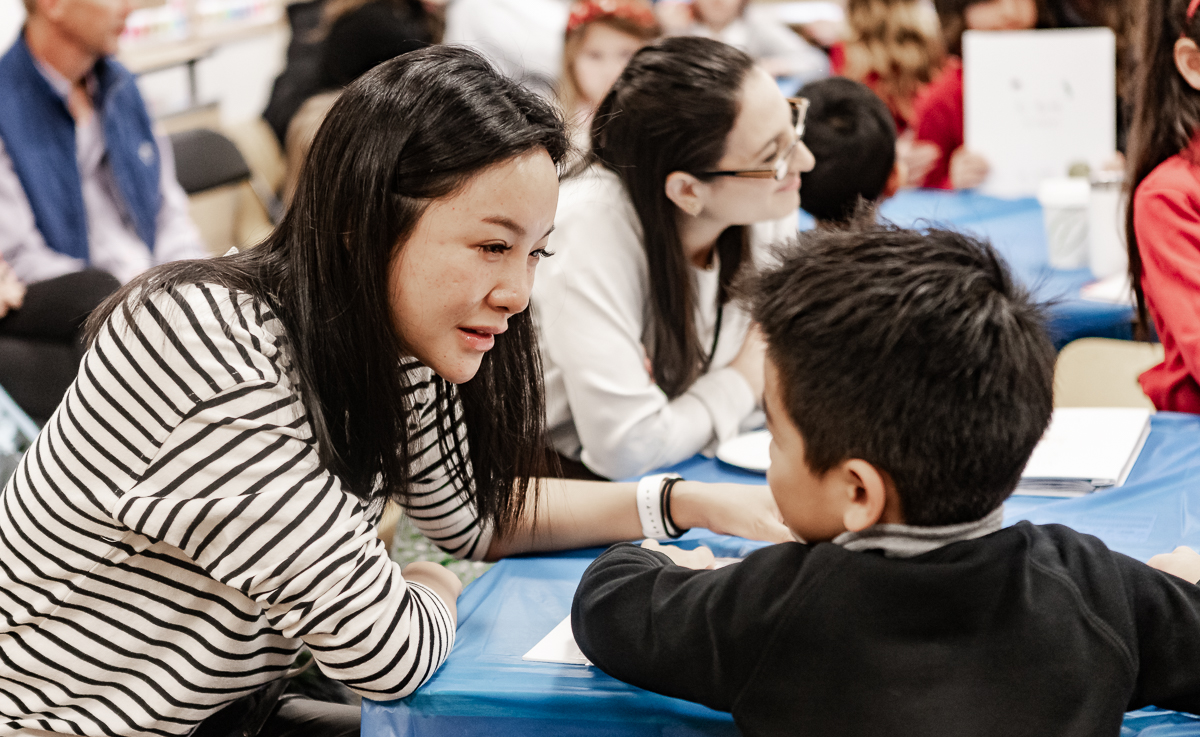
The world of the non-fiction genre has been our second graders’ literary playground as they celebrated several weeks of research and writing with their parents at their recent Publishing Party. Circulating throughout centers of parents, they proudly read from their diagrammed and illustrated non-fiction works last week.
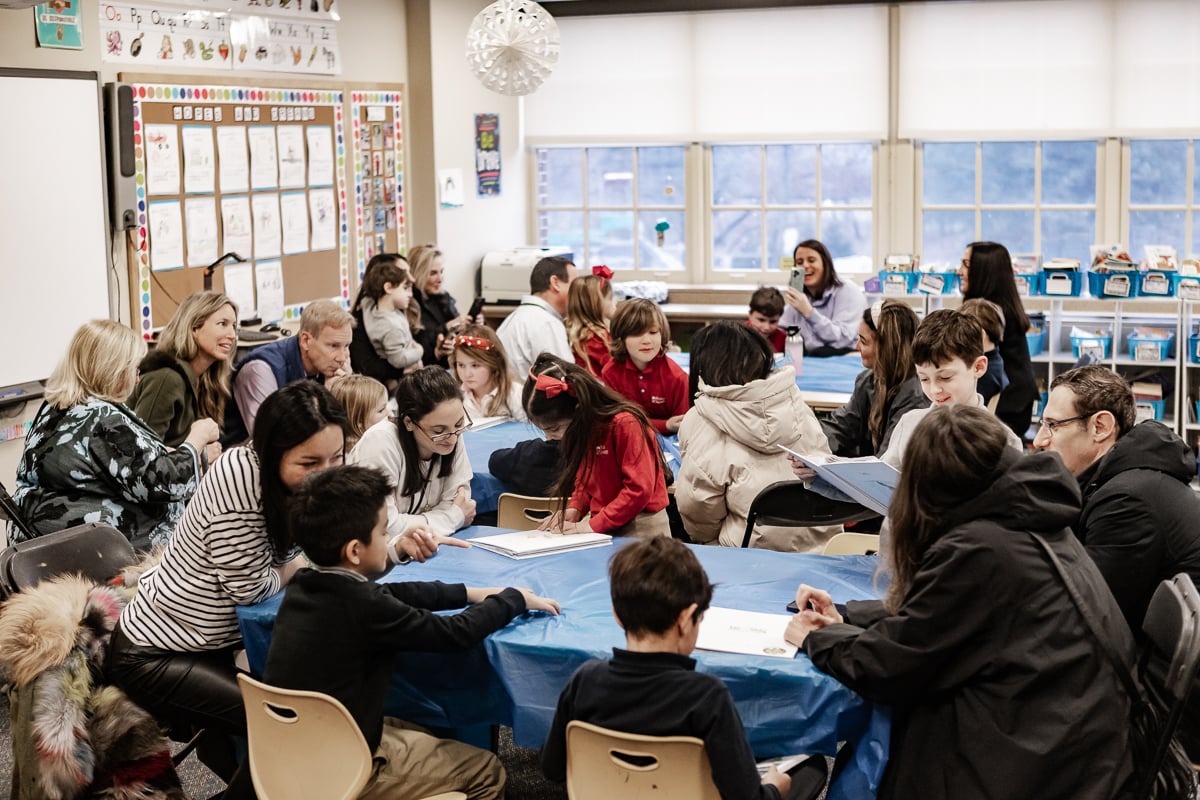
Following the initial study of Gail Gibbons, a leading non-fiction children’s author and illustrator, students dove into a number of non-fiction texts to understand its nature before choosing their own topic of research.
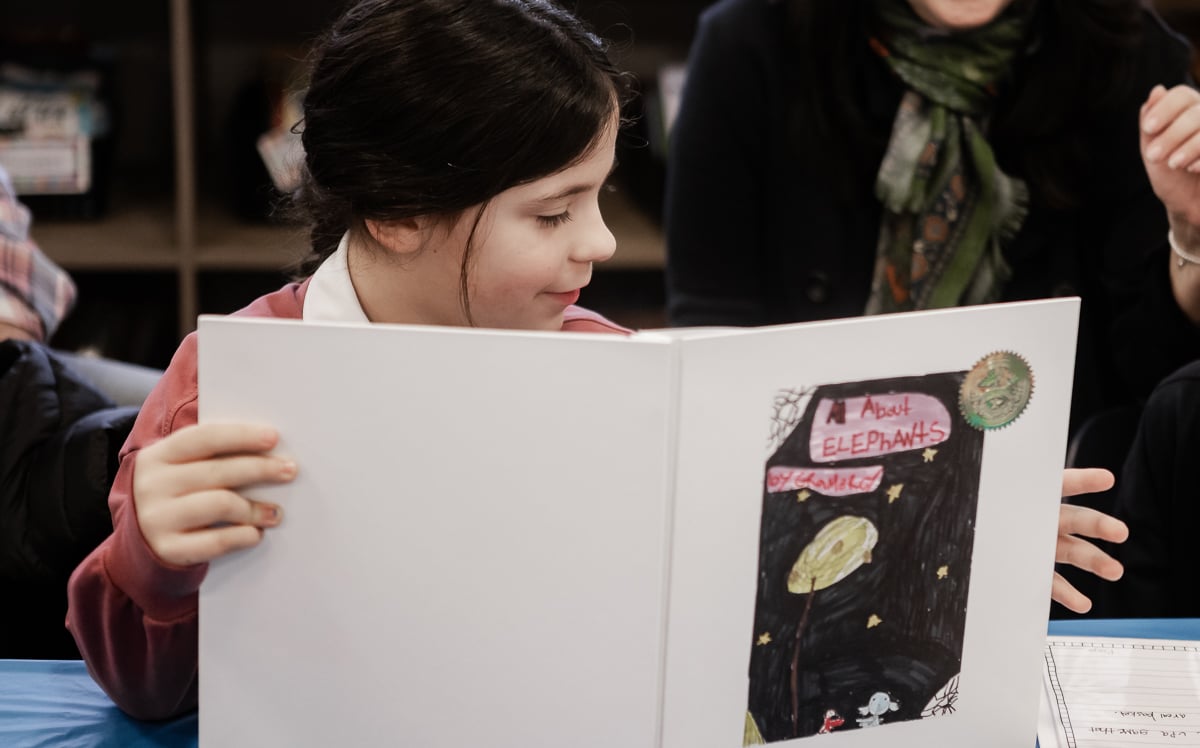
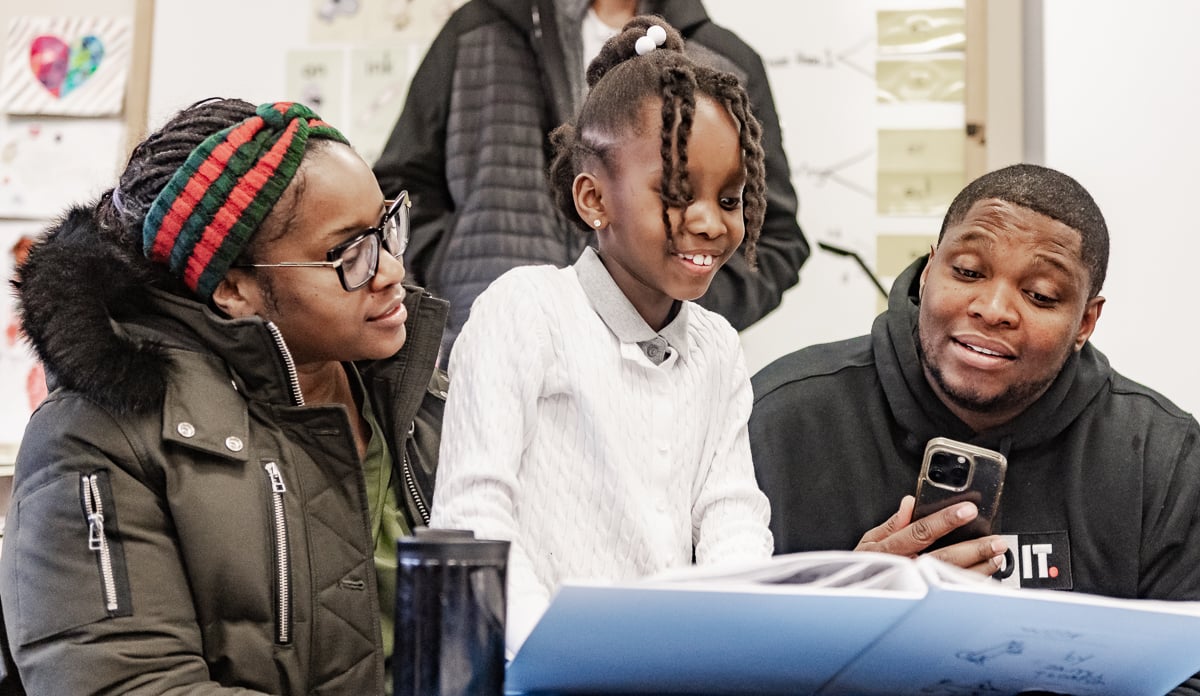
Second grade teachers Sara Weinstein and Paige Atwood provided mentoring and guidance as their students learned how to narrow their topic of interest, construct a graphic organizer that led to graphic diagrams, and then write and revise two drafts of their book, which was ultimately bound.
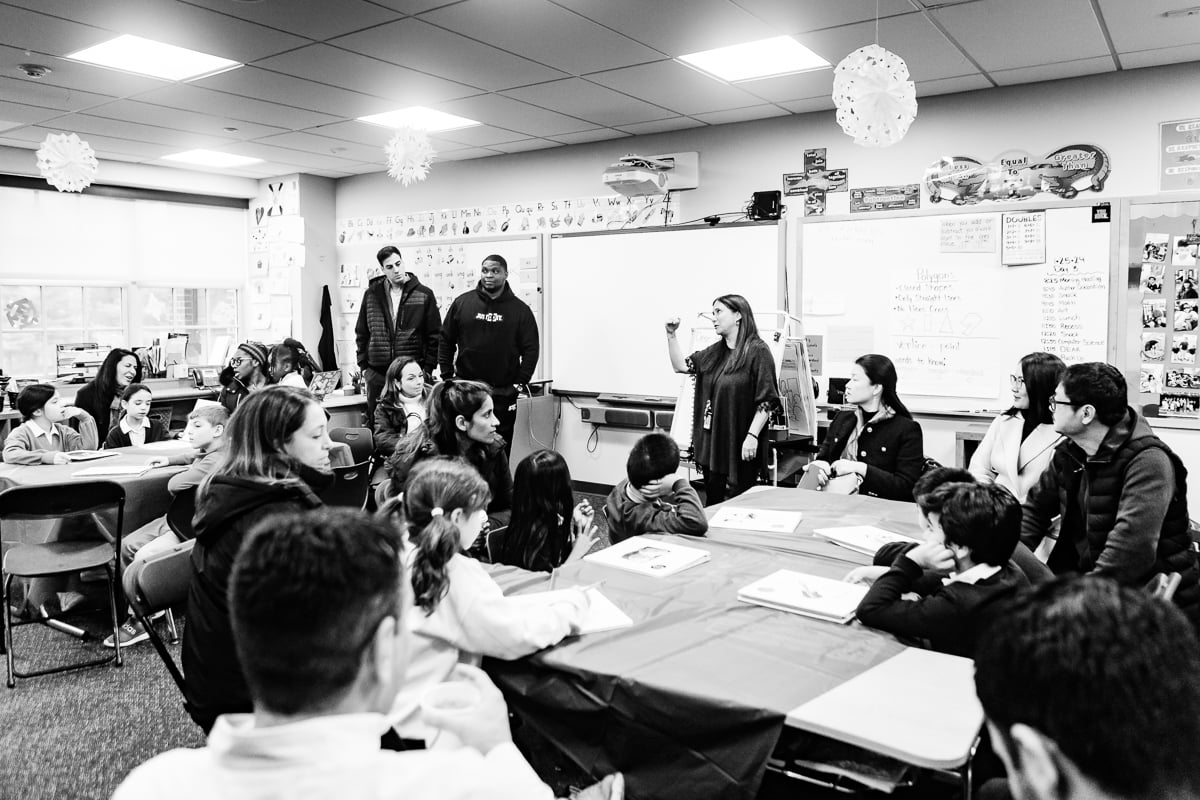
“Their topics were informed by their own interests and experiences,” explained Mrs. Weinstein, “and in one case, involved primary source research.” Subject matter ranged from the study of various animals to Flamenco dancing, music, the environment, and sports.
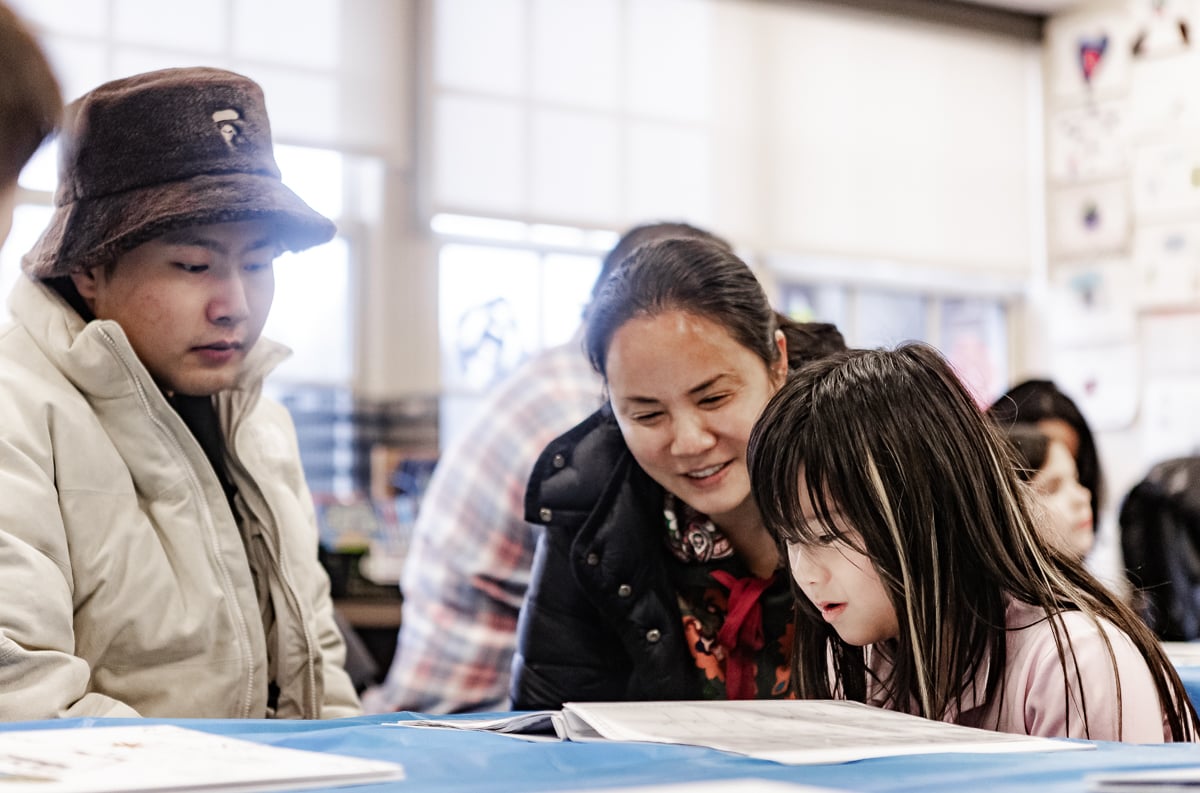
“We study and write within different genres throughout the year,” added Mrs. Atwood. Starting with the accessibility of fiction, such as the Elephant and Piggie series, second graders then explored personal narrative and other genres. “As students are exposed to more types of literature, they begin to develop the skills of transferral – being able to take a skill learned with one writing genre and transfer it to another,” she added.
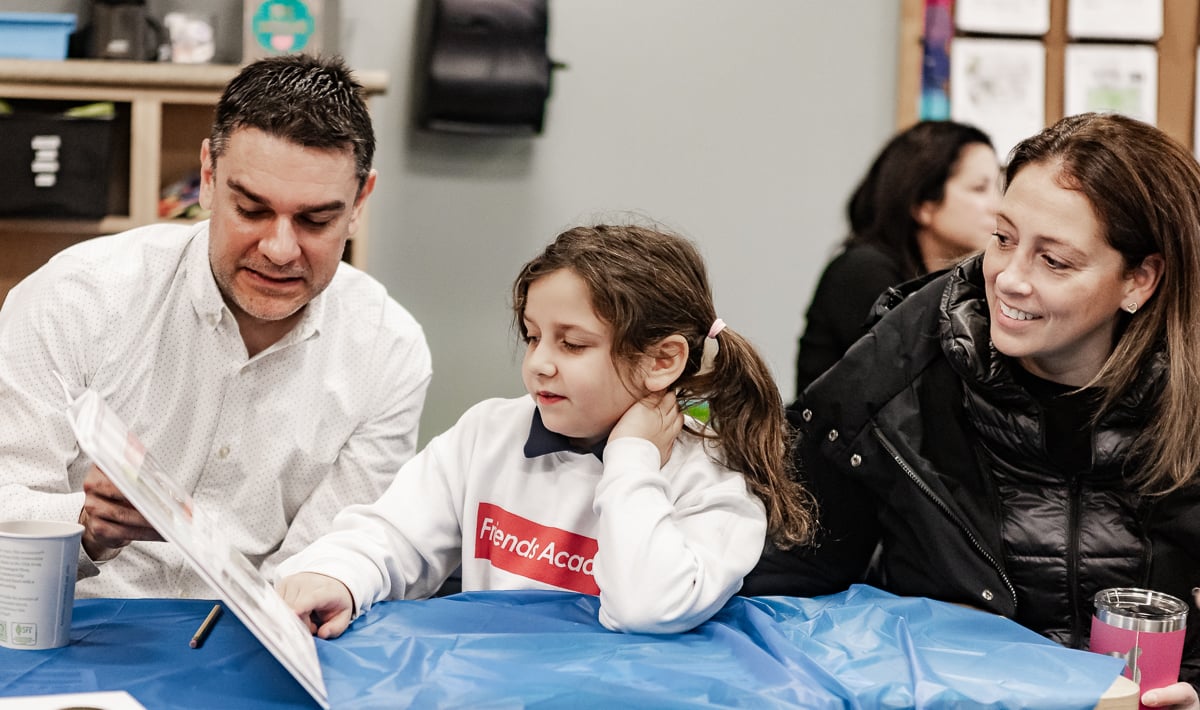
Introducing and honing research skills was an important focus of the project. “Students began to understand that you are not going to take a whole book and make it your own,” shared Mrs. Atwood. “It’s about picking and choosing the most important information, which was not only a huge area of growth for them but was where we saw them engage the most.”
Within this unit, students were also introduced to the sophisticated ideas of peer review and academic integrity that lift up the school’s testimonies of Integrity and Community. During research and as books were being written, students started to pair up with each other to read each other’s writings. “Selectively, a couple of students started to help each other with aspects like grammar,” said Mrs. Atwood. “We were also available to help students with writing mechanics like word choice, how to build organization through chapters, spelling, punctuation, and grammar,” said Mrs. Weinstein.
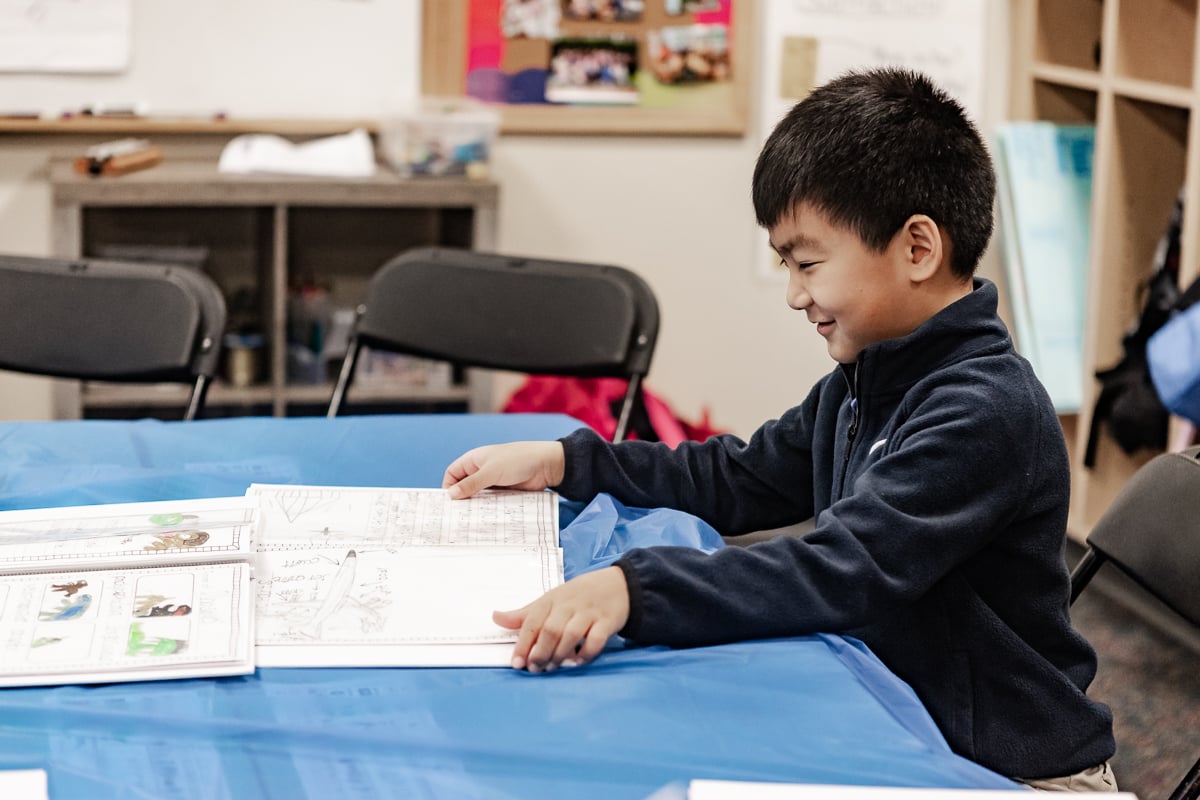
“As a Quaker school, academic integrity is paramount,” said Mrs. Atwood. “While we don’t necessarily introduce them to the specific concept of plagiarism, we do show them the importance of not copying; that every author’s word is important to them, and that the text should be unique to you,” she described. “It’s about understanding the facts – and knowing the difference between a fact and an opinion – and using them to support your own ideas.”
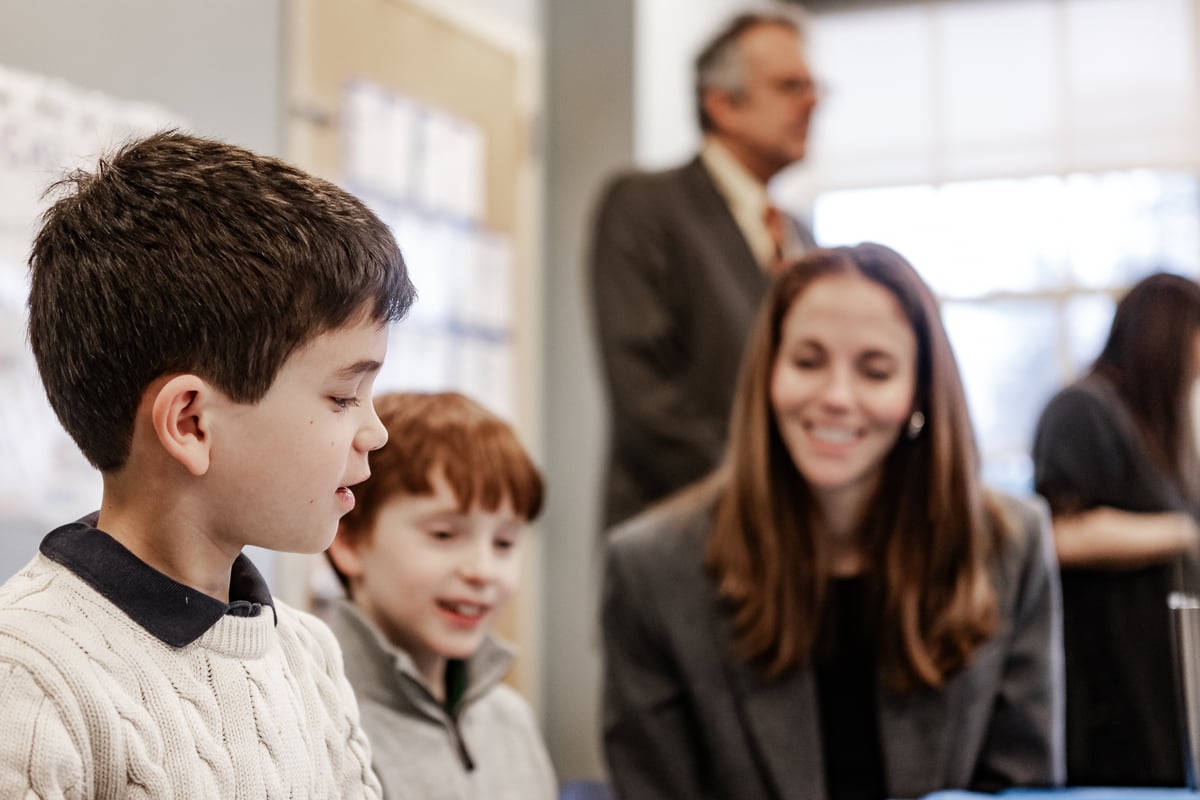
Small class sizes enabled Mrs. Weinstein and Mrs. Atwood to provide much more personalized guidance so that students could follow their own trajectories of interest. “JR is interested in boats, so he chose to also dedicate a chapter strictly to the history of the Titanic; Mason enjoys music, so research into the world of guitars was his research topic,” said Mrs. Weinstein. “Ultimately, I think the students were simply amazed that their words could end up as books,” she finished.
Photography by Alvin Caal/Friends Academy
Did you enjoy this post? Here are a few more we think you'd be interested in:
Fill out the form below to receive updates on the latest and greatest within the Friends Academy community.